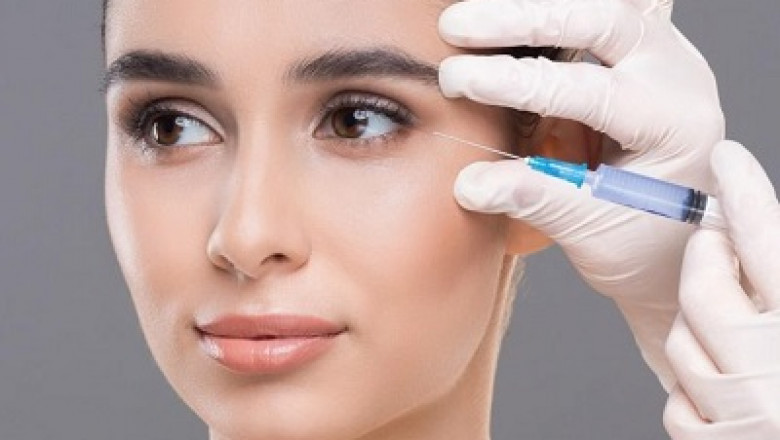views
Dermal fillers have become a popular cosmetic procedure for enhancing facial volume, smoothing wrinkles, and restoring a youthful appearance. In cities like Dubai, where aesthetics and self-care are highly valued, this non-surgical treatment is frequently sought after. However, as with any cosmetic procedure, understanding the recovery process after dermal filler injections is crucial to ensure the best results and avoid complications. In this article, we will delve into the recovery process, what to expect, and essential tips to aid healing after Dermal Fillers Injections in Dubai.
What Are Dermal Fillers?
Dermal fillers are injectable treatments designed to restore lost volume, smooth wrinkles, and enhance facial contours. These fillers are primarily composed of hyaluronic acid, calcium hydroxyapatite, or poly-L-lactic acid, all of which are biocompatible substances that mimic natural components of the skin. The procedure is minimally invasive, with no need for incisions, and results are immediate.
While dermal fillers can deliver impressive aesthetic enhancements, it is essential for patients to understand the recovery process to achieve optimal results and minimize side effects.
Immediate Aftercare Following Dermal Filler Injections
The immediate aftermath of dermal filler injections in Dubai generally involves minor discomfort, swelling, and redness at the injection sites. Here’s what you can expect right after the procedure:
1. Swelling and Redness
Swelling and redness are common and typically subside within a few hours to a few days. The degree of swelling may vary depending on the treated areas, the type of filler used, and individual factors such as skin sensitivity.
2. Bruising
Some patients may experience bruising, especially if the filler was injected into areas with delicate blood vessels, such as the under-eye region. Bruising usually resolves within a week but can be minimized with proper aftercare.
3. Slight Discomfort
While the procedure is generally well-tolerated, some patients may experience mild discomfort, tenderness, or a sensation of fullness at the injection sites. Over-the-counter pain relievers can help alleviate discomfort, but it is important to consult your practitioner before taking any medications.
4. Lumps and Bumps
In some cases, small lumps or bumps may form beneath the skin after filler injections. These should resolve on their own within a few days as the filler settles into place. However, if the lumps persist or cause concern, contact your practitioner for advice.
Post-Treatment Guidelines for a Smooth Recovery
Following dermal filler injections, adhering to your practitioner’s aftercare instructions is essential to ensure a smooth recovery and avoid complications. Here are some important post-treatment tips for faster recovery:
1. Avoid Touching the Treated Area
Refrain from massaging, pressing, or touching the treated areas for at least 24 hours. This will help prevent the filler from shifting and reduce the risk of infection or irritation.
2. Limit Physical Activity
Strenuous physical activity, including exercise, should be avoided for at least 24-48 hours after the treatment. Activities that increase blood circulation, such as hot showers or saunas, should also be avoided during this time to minimize swelling and bruising.
3. Cold Compress for Swelling
Applying a cold compress to the treated areas can help reduce swelling and discomfort. Make sure to use a soft cloth or gauze between the ice pack and your skin to prevent frostbite.
4. Stay Upright
For the first 4-6 hours after the procedure, try to remain upright as much as possible. This helps the filler settle more evenly and reduces the chances of swelling.
5. Hydration
It’s essential to stay hydrated post-treatment. Drink plenty of water, especially if you received hyaluronic acid-based fillers, as these substances attract water and can help the filler integrate better into your skin.
6. Avoid Alcohol and Smoking
For at least 24-48 hours after the procedure, avoid consuming alcohol and smoking. Both can contribute to increased swelling and slow down the healing process.
Potential Side Effects and Complications
While dermal fillers are generally safe, there are some potential risks and complications that patients should be aware of:
1. Infection
Although rare, infection is a risk with any injectable treatment. To minimize this risk, ensure that the treatment is performed by a licensed and experienced practitioner, and follow proper aftercare instructions.
2. Allergic Reactions
Some patients may experience an allergic reaction to the filler material. Symptoms may include redness, swelling, itching, or rash. If these symptoms persist or worsen, consult your doctor immediately.
3. Migration of Filler
In rare cases, dermal filler may migrate from the treated area. This can result in uneven results or a lumpy appearance. To prevent this, make sure you follow aftercare guidelines strictly, particularly the advice to avoid massaging or pressing on the treated area.
4. Vascular Occlusion
This is a serious but rare complication where the filler blocks a blood vessel, potentially causing tissue damage. If you experience intense pain, blurring vision, or skin discoloration after the procedure, seek immediate medical attention.
When Will I See the Final Results?
The full effects of dermal filler injections are usually visible within 1-2 weeks after treatment. While you may notice some improvements immediately, it takes time for the swelling to subside and the filler to integrate into the skin for a smoother, more natural appearance.
Conclusion
The recovery process after dermal filler injections in Dubai is relatively quick, with most patients able to resume their normal activities within a few days. However, by following proper aftercare instructions and being mindful of potential risks, you can help ensure the best possible results. Always consult a licensed and experienced practitioner to ensure that your treatment is performed safely and effectively, giving you the youthful, rejuvenated look you desire without the need for invasive surgery.






















Comments
0 comment